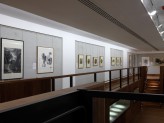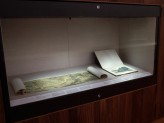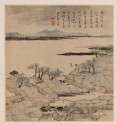Chinese Landscapes from the Ashmolean Collection
(from 9th Feb until 21st Jul 2013)Explore the continued tradition of Chinese landscape painting in this complement to the Xu Bing show.

- This is a visual browsing tool that maps objects in this publication, gallery or collection trail by date of creation onto a timeline.
- The circular markers indicate where objects are on the timeline.
- The size of the markers indicates the relative number of objects at that point on the timeline.
- Hover over a marker to find out which objects are represented at that point in time.
- To expand, collapse or hide the timeline, click these symbols
 found at the top right of the timeline.
found at the top right of the timeline.
- 1140
- 1180
- 1220
- 1260
- 1300
- 1340
- 1380
- 1420
- 1460
- 1500
- 1540
- 1580
- 1620
- 1660
- 1700
- 1740
- 1780
- 1820
- 1860
- 1900
- 1940
- 1980
Introduction
The works in this exhibition have been selected from the Ashmolean’s collection to complement the Museum’s spring exhibition Xu Bing: Landscape Landscript (28 February-19 May 2013).
Since 1999, Xu Bing (b. 1955) has painted landscapes that exploit the fact that the first Chinese characters looked like pictures. He uses the character for stone (石) to represent stones, the character for tree (木) to represent trees, and so on. In a set of four new works to go on display (Gallery 60) he has for the first time used this method to make landscapes that copy paintings by earlier artists dating from the Ming (1368–1644) and Qing (1644–1911) dynasties.
This exhibition includes 17th-century paintings that belong to the same tradition that Xu Bing copies. Others bear inscriptions that state the artist’s debt to painters of earlier generations. The Chinese landscape painting tradition is based on reworking forms and styles established hundreds of years ago: the early paintings displayed here show the tradition at around its mid-point so far, while the later works demonstrate its endurance.
Eastern Art Online presents an online version of Chinese Landscapes from the Ashmolean Collection, currently on display in the Ashmolean's Chinese Paintings Gallery. It enables visitors to browse and search all exhibition objects and their high-quality zoomable images online.
 Chinese Paintings Gallery - Chinese Landscapes exhibition upper.
Chinese Paintings Gallery - Chinese Landscapes exhibition upper.
 Chinese Paintings Gallery - Chinese Landscapes exhibition case.
Chinese Paintings Gallery - Chinese Landscapes exhibition case.
 Chinese Paintings Gallery - Chinese Landscapes exhibition hanging scrolls.
Chinese Paintings Gallery - Chinese Landscapes exhibition hanging scrolls.
Further information about the Xu Bing: Landscape Landscript exhibition can be found on the Museum website. The exhibition will also feature on Eastern Art Online in the coming months.
Was located in
Notice
Objects from past exhibitions may have now returned to our stores or a lender. Click into an individual object record to confirm whether or not an object is currently on display. Our object location data is usually updated on a monthly basis, so please contact the Jameel Study Centre if you are planning to visit the museum to see a particular Eastern Art object.
© 2013 University of Oxford - Ashmolean Museum




